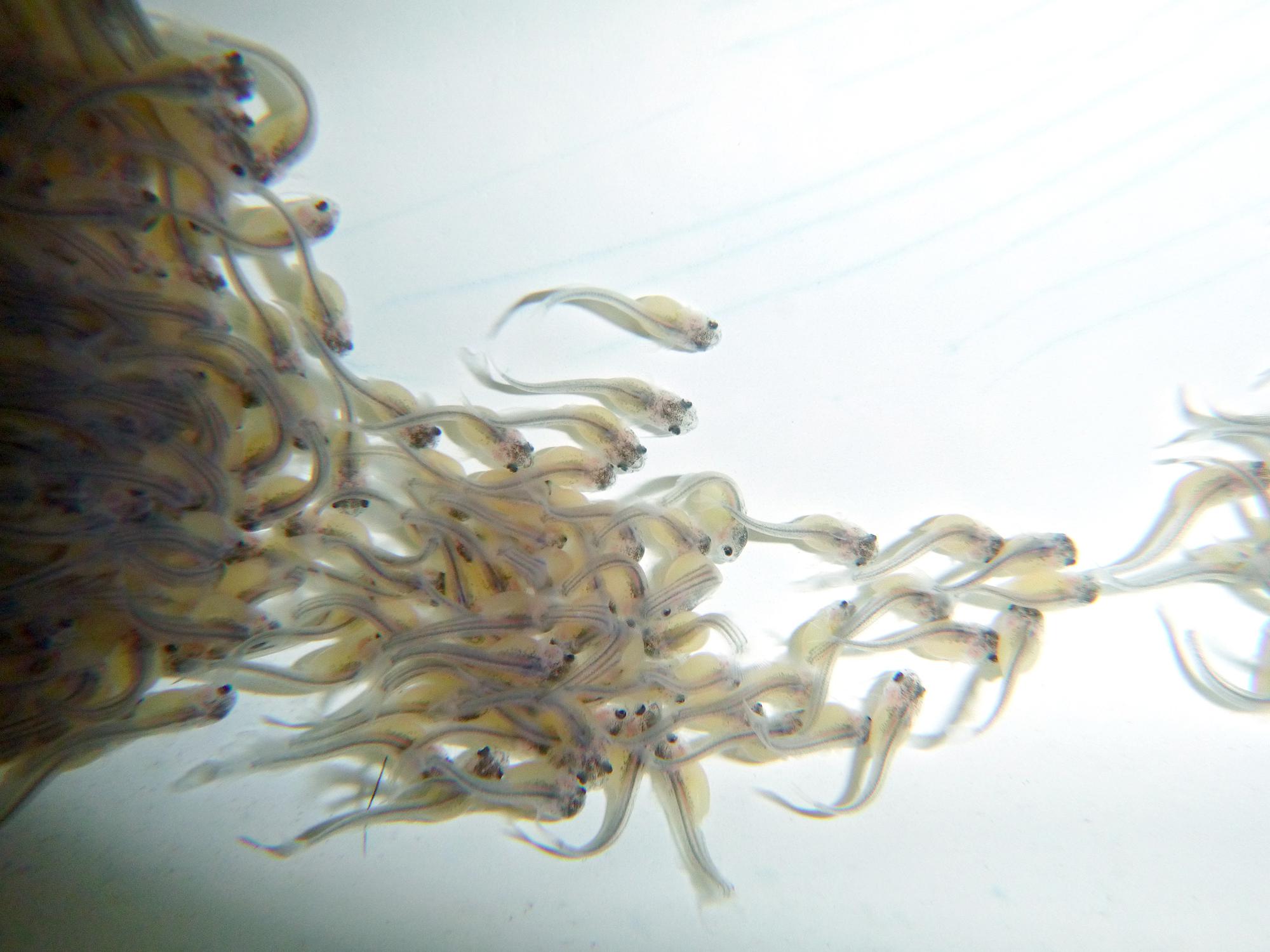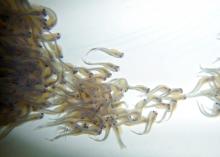Information Possibly Outdated
The information presented on this page was originally released on August 1, 2014. It may not be outdated, but please search our site for more current information. If you plan to quote or reference this information in a publication, please check with the Extension specialist or author before proceeding.
Catfish find challenges in cooler pond waters
STONEVILLE -- There is a reason catfish do well in Mississippi: hot summers.
“An unusually cool summer like we have had can create nice days for people, but the temperatures have caused some problems for our catfish,” said Jimmy Avery, Extension aquaculture specialist at the Mississippi State University Delta Research and Extension Center.
Avery said cooler water reduces fish weight gain and increases bacterial disease development. Ideally, producers want the weather to go quickly from cool to hot in the spring and stay hot. Short cool fronts give the water time to stay in the danger zone and promote wave after wave of bacteria. These bacterial diseases attack fish but do not impact consumers.
“Another impact from the cool weather is that it has taken longer to get fish to the market. Fish don’t eat and grow as well when they are cool,” Avery said. “The good news is that the extended cool spring allowed fingerling producers a longer hatchery season, so numbers should be good. Catfish like to spawn in a narrow temperature range, and water stayed at the ideal spawning temperature longer.”
Mark Peterman, Extension aquaculture associate based in east Mississippi, said only a small percentage of ponds have had disease outbreaks, but all producers are watching closely.
“We started getting calls about disease issues around the middle of April. Initially, we were seeing proliferative gill disease, which is caused by parasites. Then the slightly warmer water temperatures triggered Columnaris and Aeromonas, both bacterial diseases,” Peterman said. “Effective antibiotic treatments are available, but producers can have widespread die-offs if ponds are not treated promptly.”
The U.S. Department of Agriculture’s National Agricultural Statistic Service recently reported 41,300 acres in Mississippi used for catfish production. Of that total, 7,400 acres of catfish ponds are in Noxubee, Lowndes and Chickasaw counties, down from 14,200 acres in 2008.
“Most of the water acres are still flooded and are used for irrigation,” Peterman said. “When the market demand increases, these ponds are poised to be put back into catfish production.”
Avery, who also serves as an administrator with the Mississippi Agricultural and Forestry Experiment Station as the director of the Southern Regional Aquaculture Center in Stoneville, said the cool weather may mean fish will be smaller at the end of the season, unless conditions get significantly hotter in August and September.
“Typically, we are feeding strong through most of October if the weather cooperates,” he said.
Avery said producers have been somewhat optimistic as they have witnessed fairly strong, consistent fish prices between $1.15 and $1.20 per pound.
“They are still fighting high expenses, primarily fuel and feed costs,” he said. “This year producers are having to spend more money to fight the diseases.”
For perspective, Avery said catfish prices bottomed out around 55 cents per pound just over 10 years ago. During an extreme shortage in 2011, prices got as high as $1.35, which really hurt the industry as consumers turned to cheap imports.
As prices improved, farmers stocked more and increased production. Mississippi went from 300 million pounds processed in 2012 to 330 million pounds in 2013.
“Imports continue to be a challenge for the U.S. farm-raised catfish industry. Seventy-five percent of the catfish or catfish-like products we eat in the U.S. are imported, primarily from Vietnam and China,” he said. “Whenever consumers order or purchase fish, they need to look for the country-of-origin label. Mississippi restaurants post signs on the wall or menu.”
Avery said a fairly good marketing approach has kept fish prices at a level for most producers to stay in business.




